#north of north aptn
Explore tagged Tumblr posts
Text

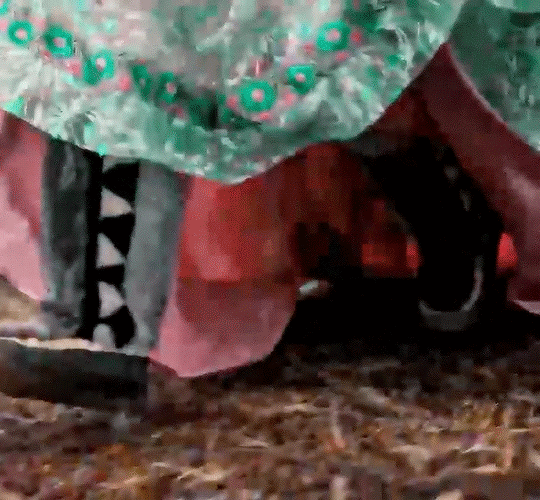





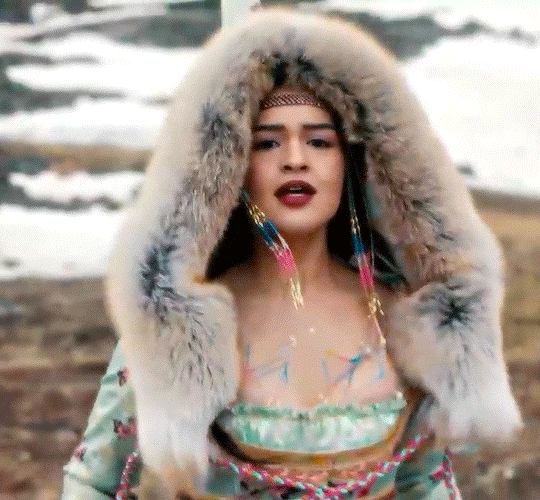

NORTH OF NORTH (2025) costume appreciation: "Inuk Bridgerton" (Series Costume Design by Debra Hanson)
requested by @alinahdee ✨
#bridgerton#north of north#north of north aptn#siaja#anna lambe#inuk#inuit#indigenous#inuk fashion#inuit culture#indigenous fashion#costume design#costumes#costume appreciation#period drama#indigenous cinema#nonedit#tvedit#tvdaily#cinematv#tvgifs#televisiongifs#dailytvedit#dailytvgifs#costumeedit#perioddramaedit#perioddramasource#perioddramagif#this costume is just GORGEOUS!!🤩
1K notes
·
View notes
Photo










When people ask where I'm from, I say, think of the furthest place north you've ever been. Now keep going. Keep going. Yep, that's us. Ice Cove, Nunavut. The heart of the arctic. Now, most southerners think we're... And while all that's technically true, I am a modern Inuk woman. Whatever that means. All my life, I've tried to do everything right. I got married out of high school, started a family, and now he's the town golden boy, and I'm... his wife. But it's springtime which is kind of like our new year's And this year, I'm finally putting myself first. I'm gonna get a job, reconnect with friends, Be the best mom, and maybe even- Come on, babe. No one's gonna be looking at you anyways. Coming!
North of North, Season 1 Episode 1, "Top of the World" created by Stacey Aglok MacDonald & Alethea Arnaquq-Baril
#north of north#nonedit#north of north aptn#tvedit#televisiongifs#cinemapix#cinematv#indigenous cinema#aboriginal film#canadian cinema#anna lambe#jay ryan#maika harper#kelly william#mary lynn rajskub#bailey poching#braeden clarke#mine*#this is a such a good show (so far)#everyone needs to watch it!
288 notes
·
View notes
Text
Sunday, September 08, 2024 Canadian TV Listings (Times Eastern)
WHERE CAN I FIND THOSE PREMIERES?: THE WONDERLAND MASSACRE & THE SECRET HISTORY OF HOLLYWOOD (MGM+) UNIVERSAL BASIC GUYS (City TV) 8:00pm BOB’S BURGERS (CHCH/Fox Feed/Check Local Listings) 8:30pm THE GREAT NORTH (CHCH/Fox Feed/Check Local Listings) 9:00pm
WHAT IS NOT PREMIERING IN CANADA TONIGHT?: ANIMAL GENIUS (TBD - Nat Geo Canada) MURDER BELOW DECK (TBD - Lifetime Canada) NATIONAL PARKS: USA (TBD - Nat Geo Canada)
NEW TO AMAZON PRIME CANADA/CBC GEM/CRAVE TV/DISNEY + STAR/NETFLIX CANADA:
AMAZON PRIME CANADA SHRINK
NETFLIX CANADA THE DAY AFTER TOMORROW TEENAGE MUTANT NINJA TURTLES TEENAGE MUTANT NINJA TURTLES 2
2024 US OPEN TENNIS (TSN/TSN4) 1:00pm: Men’s Final Preview (TSN/TSN4) 2:00pm: Men’s Final
NFL FOOTBALL (TSN3) 1:00pm: Jaguars vs. Dolphins (TSN3) 4:00pm: Broncos vs. Seahawks (TSN/TSN3/TSN4/TSN5) 8:20pm: Rams vs. Lions
MLB BASEBALL (SN) 1:00pm: Jays vs. Atlanta (SN Now) 4:00pm: Guardians vs. Dodgers (TSN2) 7:00pm: Diamondbacks vs. Astros
2024 SUMMER PARALYMPIC GAMES (CBC) 2:00pm: Closing Ceremony
SPRUCE MEADOWS - ROLEX GRAND SLAM (SN1) 3:30pm
WNBA BASKETBALL (TSN2) 4:00pm: Aces vs. Liberty (SN) 9:00pm: Sun vs. Sparks
NORTHWOODS SURVIVAL (APTN) 7:00pm: It's a return to a life free from the reliance on modern conveniences and away from the hustle and pollution of cities; it's a gamble that comes with a glorious upside, but also frighteningly high stakes.
CAR S.O.S. (Nat Geo Canada) 8:00pm (SEASON PREMIERE): Tim Shaw and Fuzz Townshend undertake dramatic automobile interventions across the U.K.
HOMICIDE HUNTER: AMERICAN DETECTIVE (Investigation Discovery) 8:00pm: Joe Kenda examines some of America's most disturbing and mind-blowing cases.
FIGHT NIGHT: THE MILLION DOLLAR HEIST (Showcase) 9:00pm/10:00pm (SERIES PREMIERE): Atlanta prepares for Muhammad Ali's comeback fight, and everyone wants a piece of the action; Chicken Man sets his eye on the fight night prize; Detective JD Hudson's call to duty is tested.
UNSELLABLE HOUSES (HGTV Canada) 9:00pm (SEASON PREMIERE): With her daughter's dire health crisis alleviated, a mother is ready to part with a 1920s bungalow she bought to be by her side. She's looking to get top dollar, so she's calling on Lyndsay and Leslie go bold with an era-specific, glitzy upgrade.
TROPPO (Super Channel Fuse) 9:00pm: A major breakthrough in the investigation becomes threatened when Amanda's past erupts into the present.
ROCK SOLID BUILDS (HGTV Canada) 10:00pm: A year in the making, it's all hands on deck at the Brigus waterfront as the team races to complete a custom three-story home, and that means completing a pile-up of tricky details inside and out, all in time for the Brigus Blueberry Festival.
#cdntv#cancon#canadian tv#canadian tv listings#northwoods survivial#troppo#rock solid builds#tennis#nfl football#mlb baseball#summer paralympics#wnba basketball
2 notes
·
View notes
Text
Tagged by @seecarrun, let's do this
1. 3 Ships I Like
Damn, I have way more than three just in Pokemon. Okay, uhh right now the big ones are Pokeshipping, Hanamusashipping, and Phaesporiashipping, but I am also down for some Rocketshipping.
2. First Ship Ever
Pokeshipping and Rocketshipping grabbed me by the throat and refused to let me go.
3. Last Song I Heard
Oubliette by Aurelio Voltaire. A dancey little tune about falling into an inescapably deep pit.
4. Favorite Childhood Book
Captain Underpants. I remember reading the fourth one in class during silent reading and bursting out into giggles.
5. Currently Reading
I, uh... haven't read much lately.
6. Currently Watching
Not watching much tv these days (mostly been a rotating selection of Youtube videos) but APTN's been running North of 60 reruns five days a week and Mom's been watching those and me and Dad are slowly getting more and more invested.
7. Currently Consuming
Just had some cucumber slices and baby carrots, about to have chips, with lemonade to wash it all down.
8. Currently Craving
Honestly, some Carl's Jr.; yes, we have them in Edmonton.
You can do this if you want, and I'm gonna tag @fivedayslater, @o-sakakakakaka, @dykecassidy, @zackloup, and @dolichomorph, but no pressure
5 notes
·
View notes
Text

Louis "David" Riel was a Canadian politician, a founder of the province of Manitoba, and a political leader of the Métis people. He led two resistance movements against the government of Canada and its first prime minister, John A. Macdonald. Riel sought to defend Métis rights and identity as the Northwest Territories came progressively under the Canadian sphere of influence.
The first resistance movement led by Riel is now known as the Red River Rebellion of 1869–1870. The provisional government established by Riel ultimately negotiated the terms under which the new province of Manitoba entered the Canadian Confederation. Riel ordered the execution of Thomas Scott, and fled to the United States to escape prosecution. He was elected three times as member of the House of Commons, but, fearing for his life, he could never take his seat. During these years in exile he came to believe that he was a divinely chosen leader and prophet. He married in 1881 while in exile in the Montana Territory in the United States; he fathered three children.
In 1884 Riel was called upon by the Métis leaders in Saskatchewan to help resolve longstanding rights grievances with the Canadian government, which led to armed conflict with government forces, the North-West Rebellion of 1885. Defeated at the Battle of Batoche, Riel was imprisoned in Regina where he was convicted at trial of high treason. Despite protests, popular appeals and the jury's call for clemency, Riel was executed by hanging. Riel was seen as a heroic victim by French Canadians; his execution had a lasting negative impact on Canada, polarizing the new nation along ethno-religious lines. The Métis were marginalized in the Prairie provinces by the increasingly English-dominated majority. An even more important long-term impact was the bitter alienation Francophones across Canada felt, and anger against the repression by their countrymen.
Riel's historical reputation has long been polarized between portrayals as a dangerous religious fanatic and rebel opposed to the Canadian nation, and, by contrast, as a charismatic leader intent on defending his Métis people from the unfair encroachments by the federal government eager to give Orangemen-dominated Ontario settlers priority access to land. Arguably, Riel has received more formal organizational and academic scrutiny than any other figure in Canadian history.
Read more here: https://en.wikipedia.org/wiki/Louis_Riel#HeroSection
Honouring Louis Riel in Alberta | APTN News: https://www.youtube.com/watch?v=4S8qE9IT3VE&t=32s
Did You Know? - The History of Louis Riel: https://www.youtube.com/watch?v=t5YrtvO7FDs
0 notes
Text
0 notes
Text
So, I was going to make this list on National Indigenous Peoples’ day but I held off for two reasons: firstly we shouldn’t have to wait for special occasions to talk about Indigenous experiences and Indigenous issues but also because Canada Day was right around the corner. Canada is a settler-colonial state and while for many non-native peoples Canada day celebrates a seemingly proud history of freedoms and equality and innovation, for many indigenous peoples across so-called-Canada it is an uncomfortable, and even painful, reminder of a violent history of oppression and a continued struggle against settler-colonialism. So instead of taking July 1st to dwell on Canada’s questionable past take the time to consider Canada’s future and how we can work to undo the settler-colonial structure currently in place. So many people really don’t know where to start with undoing this country’s colonial legacy, so I’ve compiled a list (which is by no means exhaustive) of resources to start with
So please, as Canada day does look a little different this year, maybe start a new tradition of education and/or appreciation of Indigenous Peoples’ and our history on this territory as well as are contemporary experiences here. Also if you are not Canadian you can take some time to look at these or spread these resources (colonialism is not just a Canadian issues, it is a global one).
Documentaries:
Angry Inuk (Dir. Alethena Arnaquq-Baril, 2016) - Can be found on Youtube. Examines the importance of sealing to the Inuit and their struggle to continue their ways of life against colonialism by both the Canadian state, private oil/fracking companies, and even the EU’s anti-sealing laws. Watch if you’re interested in food sovereignty and protecting traditional ways of life.
Rumble: the Indian’s Who Rocked the World (Dir. Catherine Bainbridge, 2017) - Can be rented on Prime. Examines the role of Indigenous peoples in the Canadian and American music industry between the 1950s - present and what struggles they faced. Watch if you’re interested in music history and Indigenous representation.
First Contact, S1 + 2 (Dir, Jeff Newman, 2018 - ) - Can be found on APTN and TVO. A 3 part series that asks average Canadians to confront their biases about Indigenous Peoples. This is a very important watch for non-Indigenous peoples. TW: strong anti-indigenous racism in some parts. Watch if you’re interested in how racism and settler colonialism are enacted by everyday people and where common stereotypes come from.
Canada’s Toxic Chemical Valley (Dir, Patrick Macguire, 2013) - Can be found on Youtube. Looks at the history of environmental racism in Sarnia, Ontario and its affects on the people of Aamjiwnaang Reservation. Watch if your are interested in environmental justice and land rights.
Reel Injun (Neil Diamond, 2009) - Can be found Prime. Looks at the history on Indigenous representation in old Hollywood and its evolution since then. Watch if you’re interested in Indigenous representation and film history.
Searching for Winnetou: Drew Hayden Taylor Wants to Understand the Roots of the German Obsession with Native North Americans (Drew Hayden Taylor, 2018) - Can be found on Youtube. Traces the roots of Germany’s cultural obsession with the “Indians” and looks at the modern appropriation of Indigenous culture in Germany. watch if you’re interested in Cultural Appropriation and stereotypes and Europe’s role in this.
Canada’s Darkest Secret (Rania El Rafael, 2017) - Can be found on Youtube. Looks at the long and violent history of the residential schools system in Canada which ran from the mid-1800s - 1996 and how it continues to affect Indigenous communities. TW: child abuse and sexual abuse and trauma. Watch if you’re interested in assimilation, inter-generational trauma, and the modern history of Indigenous-settler relations. residential schools are the source of so many issues within modern Indigenous communities and so understanding their history and impacts is a good way of understanding why Indigenous people have the struggles we do today.
Trick or Treaty (Alanis Obomsawin, 2014) - Can be found on Youtube. Looks at the history and mishandling of treaty relations and where that leaves modern Indigenous-settler relationships. Canada has not held up a single treaty. Watch if you’re interested in treaty rights, land rights, diplomacy, and the history of Treaties.
Seachers: Highway of Tears (Dir. Stephanie Brown, Allya Davidson, 2016). Can be found on youtube and Netflix Canada. While not entirely Indigenous-centric, this documentary looks at the 71 km stretch know as the Highway of Tears where hundreds of Indigenous women have gone missing. It is not the best documentry in my opinion but its a good start to understanding the MMIDWG mov’t and how the RCMP fails indigenous women and girls. TW: murder, sexual assault and violence, violence against women and girls. Watch if you want to understand Missing and Murdered Indigenous Women and Girls.
Arts and Culture:
Biidaaban/ the Dawn Comes (Amanda Strong, 2018). Can be found on Youtube. A claymation short film that examines an Urban Indigenous woman’s relationship to her land.
The Mishomis Book: the Voice of the Obijway (Edward Benton-Banai, 2010). Can be bought at most book stores. An introduction to Anishinaabe culture and history on Turtle Island through stories and colouring-pages. Read if you’re trying to diversify you’re understanding of Canadian culture and history. This is also a great book for kids, especially Indigenous children.
Indian Horse (Richard wagamese) - This is both a film and a book, both of which are amazing. The story follows an Anishinaabe Residential school survive as he uses hockey to cope with his trauma. TW: Abuse, Child Sexual Abuse, Violence and Anti-Indigenous Racism.
Sgaawaay K’uuna/Edge of the Knife (Helen Haig-Brown, Gwaai Edenshaw, 2018) - The first film done entirely in Haadi-Gwaii (and I believe any Indigenous language), Sgaawaay K’uuna follows the struggle of a cursed man and his transformation into a wild man (Gaadiig). Based heavily in Kwakwaka’wakw and Haida folklore and oral history. watch if you’re interested in Historical reclamation, Indigenous oral history and Indigenous film.
Kent Monkman - A Cree painter who often inserts Indigenous bodies, culture and sexuality into traditionally European styles (ex, the History Painting).
To The Indigenous Woman (the 1491′s, 2011) - Can be found on Youtube. A spoken poem about violence against Indigenous women and the complacency of both Indigenous and non-Indigenous individuals in this epidemic of violence. TW: Violence against women, Sexual assault, rape.
Bad Indians (Ryan red Corn, 2011) - Can be found on Youtube. A spoken word poem about the way Non-Indigenous peoples view Indigenous peoples and our work to reclaim our voice and power on this land. TW: references to racism and genocide.
This is just the tip of the Iceberg so if you do find this interesting/ eye opening and want more information, I can 100% provide more resources. But hopefully, these documentaries can help to educate non-Indigenous peoples about the history and contemporary experiences of Indigenous People’s on Turtle Island. Gii’Miigwetch (thank you).
#This may be the longest post i've ever made.#Sorry bout that#Indigenous History#Native Rights#Canada day#educational resources#anti-racism resources#Canadian history#Canadian politics
665 notes
·
View notes
Text
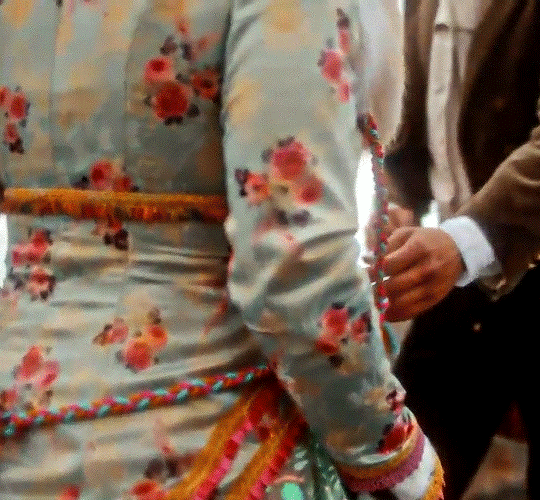
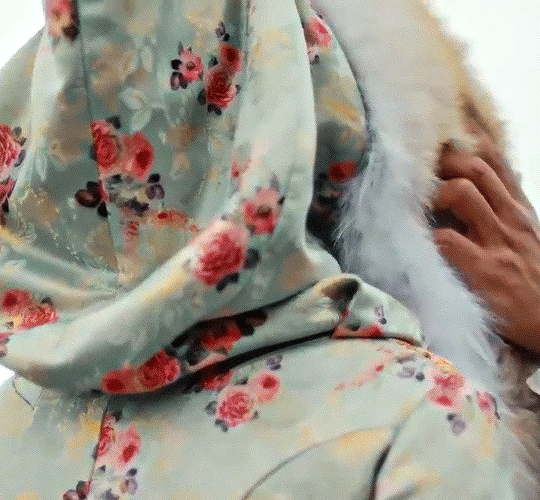
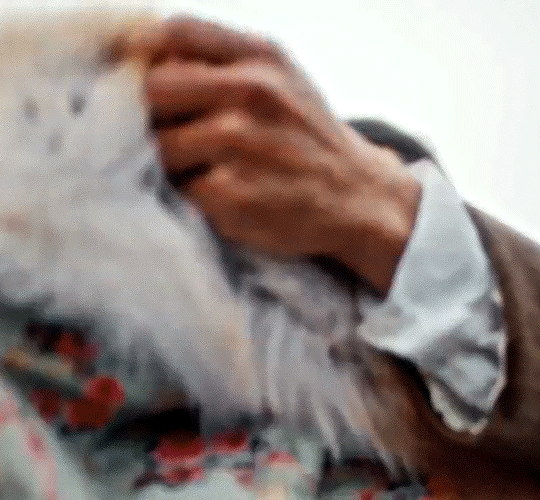
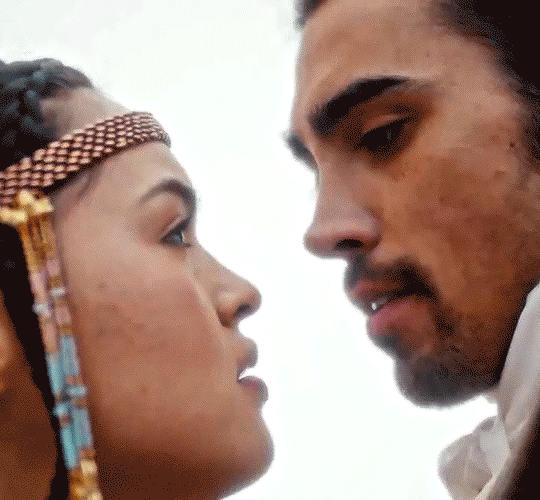
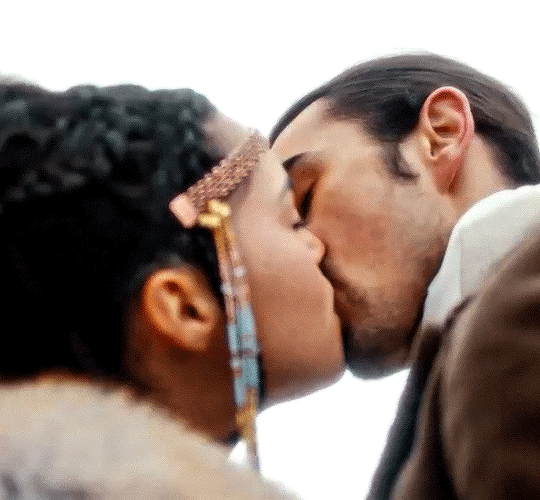
INUK BRIDGERTON✨
Helen's asking about my love life. That's fully illegal. Right? It's weird timing though cause...I've been like...having these dreams lately.
#bridgerton#north of north#north of north aptn#kuuk x siaja#anna lambe#braeden clarke#inuk#indigenous cinema#nonedit#tvedit#tvgifs#tvdaily#televisiongifs#filmtvcentral#cinematv#romancegifs#dailytvgifs#dailytvedit#perioddramaedit#perioddramasource#perioddramagif#perioddramacentral#THAT KISS WAS EVERYTHING 😭#the bridgerton inspired look was GOLD!!#Anna Lambe called this her “Inuk Bridgerton” look ✨
155 notes
·
View notes
Photo










Anna Lambe in North of North, Season 1 Episode 1 created by Stacey Aglok MacDonald & Alethea Arnaquq-Baril
#north of north#nonedit#north of north aptn#tvedit#televisiongifs#cinemapix#cinematv#indigenous cinema#aboriginal film#canadian cinema#anna lambe#stacey aglok macdonald#alethea arnaquq-baril#mine*#I have only known her for a day... and I love her
150 notes
·
View notes
Text
Thursday, December 14, 2023 Canadian TV Listings (Times Eastern)
WHERE CAN I FIND THOSE PREMIERES?: CHRISTMAS RESCUE (BET +) CMA COUNTRY CHRISTMAS (CTV) 8:00pm HEAVEN DOWN HERE (W Network) 8:00pm
WHAT IS NOT PREMIERING IN CANADA TONIGHT: THAT CLIP SHOW: HOLIDAY EDITION (NBC Feed) THE REAL HOUSEWIVES ULTIMATE GIRLS TRIP (Premiering on December 15 on Slice at 9:00pm) AN ICE PALACE ROMANCE (Premiering on December 22 on Lifetime Canada at 8:00pm) DRAGONS: THE NINE REALMS (TBD - YTV)
NEW TO AMAZON PRIME CANADA/CBC GEM/CRAVE TV/DISNEY + STAR/NETFLIX CANADA:
CBC GEM SOMETHING UNDONE
NETFLIX CANADA AS THE CROW FLIES (TR) (Season 2) THE CROWN (GB) (Season 6 Part 2) THE DEVIL’S ADVOCATE YU YU HAKUSHO (JP)
GRAND SLAM OF CURLING (SN) 1:00pm: Masters - Draw 10 (SNEast/SNWest/SNPacific) 5:00pm: Masters - Draw 11 (SN360) 10:00pm: Masters - Draw 12
NHL HOCKEY (SNOntario) 7:00pm: Blue Jackets vs. Leafs (TSN5) 8:00pm: Sens vs. Blues (SNWest) 8:00pm: Flames vs. Wild (SN1/SNEast) 9:00pm: Lightning vs. Oilers (SNPacific) 9:00pm: Panthers vs. Canucks
NBA BASKETBALL (SN Now) 7:30pm: Bulls vs. Heat (TSN2) 8:30pm: Timberwolves vs. Mavericks
THE HURON CAROLE 2023 (APTN) 7:30pm: Celebrated actor and singer Tom Jackson and friends mark the Christmas holidays in Halifax with the beloved concert, The Huron Carole, that this year will generate funds for the Canadian Red Cross.
THE POLAR EXPRESS (CBC) 8:00pm: The conductor (Tom Hanks) of a train to the North Pole guides a boy who questions the existence of Santa Claus.
CHRISTMAS ON CANDY CANE LANE (Super Channel Heart & Home) 8:00pm: Ivy Donaldson struggles with her mom's shadow, Muriel, the Christmas darling of Icicle Falls. She is now separated from her husband Rob and tries her best with her daughter.
NFL FOOTBALL (TSN/TSN3) 8:15pm: Chargers vs. Raiders
AUSSIE GOLD HUNTERS (Discovery Canada) 9:00pm
CANADA'S DRAG RACE (Crave) 9:00pm
OUTBACK OPAL HUNTERS (Discovery Canada) 10:00pm: A massive lightning storm forces the Young Guns to work on a series of flooded dirt roads; the Bushmen risk it all in a dangerous area vandalized by opal thieves; the Blacklighters take their chances with night mining.
WHAT HAPPENED TO VALENTINO DIXON? (Investigation Discovery) 10:00pm: The shooting of a young man in his prime, witnessed by scores, turns a seemingly open-and-shut case into a web of mystery.
CANADIAN REFLECTIONS (CBC) 11:30pm: The Fall; Escape to Eternity; Ataraxia
#cdntv#cancon#canadian tv#canadian tv listings#aussie gold hunters#canada's drag race#outback opal hunters#canadian reflections#curling#nhl hockey#nba basketball#nfl football
2 notes
·
View notes
Text
Resources
Crozier, Cullen. 2017. “APTN Investigates: Against Their Will.” APTN Investigates. Last modified January 27, 2017. https://www.aptnnews.ca/investigates/aptn-investigates-against-their-will/
Lima, Dulcey. 2019. “Women’s march 2019, Tuscon.” Unsplash, March 7, 2019. https://unsplash.com/photos/lWLTR81d8oI
Lombard, Alisa. 2021. “Coerced and forced sterilization of Indigenous women and girls: This is what genocide looks like in Canada.” Toronto Star Newspapers Ltd. Last modified March 9, 2021. https://www.thestar.com/opinion/contributors/2021/03/08/coerced-and-forced-stereilization-of-indigenous-women-and-girls-this-is-what-genocide-looks-like-in-canada.html
Marquez, Jennifer (@jamscreativephotography). 2020. “Voice.” Unsplash, November 12, 2020. https://unsplash.com/photos/BVPMqKvlUDc
Ryan, Chaneesa, Abrar Ali, and Christine Shawana. 2021. "Forced or Coerced Sterilization in Canada: An Overview of Recommendations for Moving Forward." International Journal of Indigenous Health 16 (1): 275-290. DOI: http://dx.doi.org.uml.idm.oclc.org/10.32799/ijih.v16i1.33369.
Stote, Karen. 2019. "Sterilization of Indigenous Women in Canada". The Canadian Encyclopedia. Historica Canada. Last modified April 17, 2019. https://www.thecanadianencyclopedia.ca/en/article/sterilization-of-indigenous-women-in-canada
Ward, Dennis. 2020. “Forced Sterilization a Symptom of ‘colonial hangover’ says lawyer.” APTN face to face. Last modified April 07, 2020. https://www.aptnnews.ca/facetoface/forced-sterilization-a-symptom-of-colonial-hangover-says-lawyer/
Zingel, Avery. 2019. “Indigenous women come forward with accounts of forced sterilization, says lawyer.” CBC News. Last modified April 18, 2019. https://www.cbc.ca/news/canada/north/forced-sterilization-lawsuit-could-expand-1.5102981
1 note
·
View note
Link
Inuit TV plans to have Inuktut programming in dialects from all Inuit regions, including Greenland, said Alethea Arnaquq-Baril, president of the new broadcaster, Inuit TV Network. Inuktut is a term used to encompass all Inuit languages, including Inuktitut.
"Many Inuit homes don't have computers or good internet access. We saw the need for a conventional broadcaster. We just simply haven't been getting enough Inuktut content on CBC and APTN," she said.
"This educational broadcaster will make it easier to be able to show more Inuktut content in Inuit homes."
(...) The Inuit TV Network is planning occasional programming for this year and full-time programming in 2021.
"We will be starving for content at first," Arnaquq-Baril said.
Focused on cultural and language education, the network would be a place for Inuit filmmakers to show their work. It would also run content from other production companies, such as the Inuit Broadcasting Corporation.
Arnaquq-Baril said at a news conference that the channel will likely air on a conventional television station in Nunavut. It would also have a channel on Isuma.tv, a Nunavut-based website for Indigenous media art. But, she said details around launch and distribution are still in the works.
The station's goal is "to strengthen Inuktut, Inuit culture and identity and access to information in Inuktut, the majority language of the territory," Nunavut Tunngavik said in a news release on Thursday.
"Television viewing, even for very small children, is considered one of many ways to support literacy development," the joint news release said. "Currently, there is a lack of Inuktut programming on Nunavut television to balance the daily influence of Western culture and language."
(...) For children, she said, translating mainstream children's shows like Spider-Man and Dora the Explorer can be a "powerful way to preserve language."
Elders, who contributed to planning for the station, had their own ideas, too.
"One of the biggest requests we got from elders is that they wanted to see David Suzuki's The Nature of Things in Inuktitut. They really want to know what he was saying," she said.
6 notes
·
View notes
Text
Mothers know best but will the rest?
Patrice Mousseau, a single Mom, watched her eight-month-old daughter scratch her arms and legs until they were bloody. The only prescription the Doctor’s offered to help with eczema was a steroid cream, something Patrice didn’t want to do. So Patrice researched and identified five natural and organic ingredients that could help. Her research proved right and within two days her daughter was cured and as it turns out she wasn’t the only beneficiary.
Word of mouth, then a farmers market and fast forward to today and 800 stores sell Satya organic skin cream. Patrice is just getting started. 20% of children suffer from eczema, and the numbers from adults aren’t far beyond. How big can Patrice’s business get? She is already doing deals in Hong Kong and the USA. Can Patrice manage her growth?
To help answer that question three experts weigh in. Vicki Saunders, the founder of SheEO who is one of the most impressive individuals I have ever chatted with. When you learn about their approach to empowering woman and capitalism you will have renewed faith in generosity and collective wisdom. Vicki offers so much in terms of what it takes to build a business. From RBC we have Devinder Gill who is swept up in Patrice’s story, but also offers some sage advice on how to scale. Corby Fine, one of our thought leaders from Season One returns and puts his big digital brain to work on her business. He gets straight to the point to point Patrice in the right direction.
Whatever your pleasure, a Mom doing what she can to keep her daughter from suffering, to farmer markets and 800 retailers to knowing at the door of global markets. This is a true and telling tale of against all odds, but beating those odds with institution, insights, and the SheEO platform to build from.
Presented by RBC.
A crockpot solution (01:10) Patrice’s daughter, only 8 months old developed eczema. With no alternative treatments, except steroid cream, Patrice seeks for an alternative. Researching both traditional and academic sources, she decides to make her own treatment…in her crockpot! It worked. Patrice was onto something.
Community matters (02:32) Growing up in a small town in Northwest Ontario, and being part of the Anishinaabe Nation, provided Patrice with a strong sense of community. This held her in good stead as she battled and overcame alcoholism, eventually finding her feet to establishing herself as a successful broadcast journalist at CBC and APTN However, Patrice it not fulfilled and moves on.
From local to global (06:42) Making her first sale at a local farmers market, Patrice is ecstatic and gets her product certified organic and approved by Health Canada. Satya is launched. Getting her product onto the shelf was her next step. Starting with a “no” at the first local store she approached, Patrice's’ eczema product is now in over 800 stores and has a partnership in Hong Kong. Satya’s growth has relied mostly on word-of-mouth but it’s now time to step this up a level or two. Patrice looks to our three experts for their advice.
Advice to grow (10:06) Corby Fine, VP Digital at goeasy - Patrice needs to “dial-up” her communication on why the product matters, why her product is the best for the consumer. It’s a great product, make sure your communications bring this the fore. Devinder Gill, Regional VP, RBC Business Financial Services - sometimes you have to look back to go forwards. Getting clarity on Patrice's global ambitions would be a great place to start. Vicki Saunders, CEO of SheEO - don’t focus on too many things at once; focus on what’s directly in front of you and remember to breathe.
My closing thoughts - Patrice’s North Star (25:40) In spite of her success, Patrice has never lost her North Star, always remaining true to her purpose. Caring about those who suffer from eczema and the planet, Patrice is striving to expand her business globally, never feeling disadvantaged by her circumstances. The DNA of a true entrepreneur.
Links and References
Patrice Mousseau, Owner, Satya Organic Skincare LinkedIn - https://www.linkedin.com/in/patrice-mousseau-1109791a/ Website - https://satya.ca
Vicki Saunders, CEO of SheEO LinkedIn - https://www.linkedin.com/in/vsaunders/
Corby Fine, VP Digital at goeasy LinkedIn - https://www.linkedin.com/in/corbyfine/
Devinder Gill, Regional Vice President, RBC Business Financial Services LinkedIn - https://www.linkedin.com/in/devinder-k-gill-82446323/
RBC Business page – https://www.rbcroyalbank.com/business/index.html RBC COVID-19 Financial Relief page - https://www.rbc.com/covid-19/business.html To get specialized support for your business, visit - https://www.rbcroyalbank.com/business/advice/industry-expertise.html Canada United - https://www.gocanadaunited.ca/
Follow Tony Chapman
Website - https://chatterthatmatters.ca Twitter - https://twitter.com/TonyChapman Linkedin - https://www.linkedin.com/in/tonychapmanreactions/ Instagram - https://www.instagram.com/chatterthatmatters/ Youtube - https://www.youtube.com/channel/UCcGvzmw9MFkUcGylrFA2xCQ
My latest podcast
3 notes
·
View notes
Text
I need help picking a research topic for my project for my North American native peoples class! I'm really torn between these two:
1. I found "Indians and Aliens" on APTN and was thinking of looking at that and comparing it with how Natives are represented in mainstream extraterrestrial culture. Like how things like Ancient Aliens portray alien visitation of ancient indigenous groups as a thing in the past and kinda talking about Native myths as if they had seen aliens and mistaken them for gods. Vs. Indians and Aliens which talks to modern Natives about their encounters and merges aliens within their religious experience instead of making a distinction between the two. And also obviously I would talk about the ideas of abduction and invasion that comes along with alien encounters.
2. I could look at Bigfoot researchers and how they use Native religion to either make their work look more legitimate or to make it seem more mystical. I also wanted to dive into how there's these connections made between "Sasquatch" and Native peoples but that sasquatch is also very often described as a small surviving population of an old human ancestor species that was almost wiped out. And so what are the implications of Bigfoot "hunters" wanting to capture and then either display or kill them?
I really need to pick so I can stop researching both and start writing my prospectus lol.
45 notes
·
View notes
Link
I'm sitting on a black plastic chair in the auditorium at the Native Canadian Centre of Toronto, jiggling my legs as the casting director in front of me studies my application and headshot. I’m here, along with 30 other Indigenous men and women, to audition for the role of “background actor, Indigenous, age 25-plus” for the wildly popular (and wildly sexy) series Outlander. Producers had put out a call for Indigenous extras to appear on the show’s fourth season as time-travelling English combat nurse Claire and her hunky Scottish warrior, Jamie, journey to the New World—or, as I call it, “home.”
I’m jittery, but I’m excited too, and not just because if I’m picked, I’ll get to go to Scotland, where the series is filmed. I’ve never acted a day in my life. Nor have I ever been on a movie set—if you don’t count the times I’ve gawked at the location shooting of Suits in Toronto’s financial district. But I’ve always been obsessed with movies and TV (IMDb is my favourite website), and I’m curious to see what filming is like. And, most importantly, I haven’t seen a lot of people who look like me on television or in the movies, so this casting call feels pretty big.
I’ve been searching for representations of Indigenous people in pop culture since I was a kid growing up in the ’80s on the Six Nations of the Grand River reserve in southwestern Ontario. Among my limited options? Old Westerns with people in wigs dressed up as native people (not cool), Dances With Wolves (I’d rather watch it from the POV of the Lakota people deciding to adopt Kevin Costner than the other way around) and Disney’s Pocahontas. (Do not get me started on the song “Savages.”) Or I could pick up a VHS copy at the local video store (I did say I was an ’80s kid) of anything starring Graham Greene. And while, yes, there were some Indigenous-made movies, like Dance Me Outside, Smoke Signals and Once Were Warriors—which my friends and I would watch at sleepovers between scarfing down junk food and telling ghost stories—they only came around every few years.
Since then, there has been some movement toward inclusivity on Canadian TV with the creation of APTN (Aboriginal Peoples Television Network) in 1992 and shows like North of 60 and, more recently, Mohawk Girls and Blackstone. Mohawk Girls is one of two shows that reflect a version of life on the reserve—people greeting one another in their native languages, our dry sense of humour and how tough we can be. Blackstone is a mesmerizing drama with all the elements of the disappointingly real issues Indigenous people face, such as missing and murdered women and the high prison and youth-suicide rates. I’ve become a cheerleader for these series because they’re not only highly bingeable but also show Indigenous people as modern people in scenarios that we all face, from trying to fit in after moving to a new place to dealing with family pressure. Displaying these commonalities goes a long way toward humanizing our people, who often seem relegated to history books.
I can’t help thinking about this during my audition as I try to concentrate on what feels like the weirdest job interview ever. I’m asked to hold up my application and say my name and which nation I’m from. The impassive casting agent in front of me doesn’t blink at my Greek married name, but he does inquire what I do for a living, if I’m cool with wearing a wig (I guess no one had chic bobs in the 18th century) and if I have any problem with going to Scotland for a month. Then comes the hard part: the acting. I’m asked to turn to the camera and give a stern face, which, as anyone who knows me knows, is next to impossible, unless I’m dealing with my four-year-old daughter having a full-blown tantrum. A few takes later, I’m done. As I leave the auditorium, I mouth “Good luck” to a woman I was sitting beside earlier.
As I look back now, it felt good to be in a room of Indigenous women and men—even if we were vying for the same roles—but the experience also made me think about the implications of us always being in the background. Although this Outlander casting call felt like a great step toward representation, it also shows how far we still have to go. We have Indigenous voices on Indigenous TV, but what about mainstream pop culture? I want to see more Indigenous people playing non-specifically-Indigenous parts—because, yes, while we do have unique cultures and world views, we are not defined solely by our heritage. It’s important for non-Indigenous people to see us filling roles like Graham Greene’s cop character in Die Hard With a Vengeance. We can be smart city detectives too! Indigenous voices also need to be behind the scenes, writing, producing and directing content.
The needle is moving, albeit slowly. Actress Tantoo Cardinal and filmmaker Danis Goulet were recently invited to be members of the Oscars Academy, and many of Canada’s media organizations are focusing on bettering Indigenous representation, with government investment in Indigenous productions and hiring and the creation of a dedicated Indigenous Screen Office.
In the end, I didn’t get a callback to be one of 10 women to head to the hills of Scotland and appear for fleeting seconds behind Jamie and Claire. My movie career might not have kicked off, but I am encouraged by the historically accurate hiring tactics of such a big-budget series. Hopefully, in the near future, there will be a time-travelling romance where the main cast looks like me. You know I’ll be watching.
32 notes
·
View notes
Link
When Commissioner William Benjamin Robinson’s treaties were signed in 1850, the average Indigenous person living in one of the Lake Superior or Lake Huron bands should have received an annuity payment of about $1.60.
Today, under the terms of that same treaty, those band members receive just $4 in annuities – a dollar figure that has not budged since 1874.
The plaintiffs, who represent 30,000 First Nations people in the Anishinabek territories north of Lake Huron and Lake Superior, argue that the federal and provincial governments have failed to uphold their end of the treaties.
65 notes
·
View notes